Note: My sister-in-law once told me how the title of this prior blog (October 2014) caught her eye and she was compelled to read it. When we looked at the number of people who visited the blog, it confirmed there was a lot of interest. So, we decided to reprint the blog (albeit in an expanded version). Hope you enjoy it!
My previous blog was about a male musician (Jim Morrison) so I thought I’d give equal time to a female musician. One of Cyndi Lauper’s more popular songs was, “Girls Just Want to Have Fun.” I thought of this song as I was researching Pauline Borghèse (aka Pauline Bonaparte—Napoléon’s sister). Actually, I’m listening to Cyndi’s CD while writing this blog. As we’ll see, Pauline was just a girl wanting to have fun. Watch Cyndi Lauper’s music video here.
Did You Know?
I have no idea if these quotes, habits, or known facts about Napoléon are true. But it’s fun to speculate:
* “The Little Corporal” wasn’t that short at 5 feet 7 inches. The problem was his bodyguards towered over him and so he was considered short.
* Napoléon cheated at cards and all other games—he hated to lose. I’ve always said, it’s good to be king or in this case, emperor.
* The Emperor loved long, hot baths. See below.
* Napoléon was extremely superstitious. He was once asked if he wanted smart generals. He responded by saying no, he wanted lucky generals.
* As a warm-up for the next four habits: Napoléon liked to pinch people—both men and women.
* Prior to returning from his travels, Napoléon always wrote to his wife (or mistresses) instructing them not to bathe until he returned. Was this because he loved long, hot baths with a companion or was it a smelly fetish?
* As a lover, Napoléon wrote to Josephine once, “Take wing and come, come … A kiss on your heart, and one much lower down, much lower.”
* Continuing with Napoléon’s dirty talk—the 19th-century version of sexting: he once wrote a woman “How happy I would be if I could assist you at your undressing.”
* Finally, great speculation has been passed down for more than two hundred years that Napoléon’s penis was whacked off during the autopsy and given to a priest. Fake news about his dismembered member or was he a Bone Apart? Watch more here.
Let’s Meet Pauline
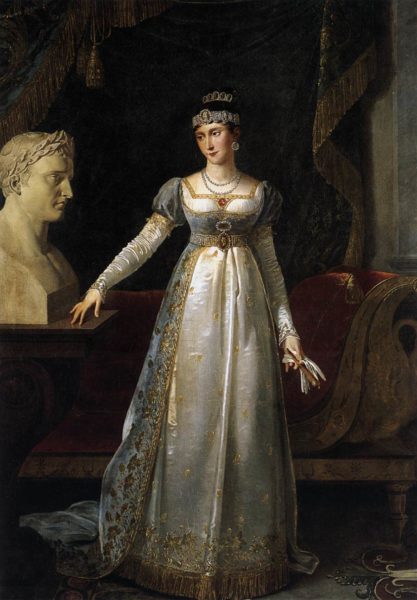
Pauline Bonaparte (1780–1825) had quite a life while living in Paris and Rome. Never one to hold political or society ambitions (she basically owed her society existence to her brother’s position), Pauline’s life was one of moving from one affair to another (being married never stopped her). Simply put, Pauline just wanted to have fun. She was very loyal to her brother as evidenced by her moving to Elba to be with Napoléon during his first exile (along with her mother, they were the only family members to do so). She liquidated her assets to support him during this time. After Napoléon’s defeat at Waterloo and ultimate exile, Pauline moved to Rome under the protection of the Pope.
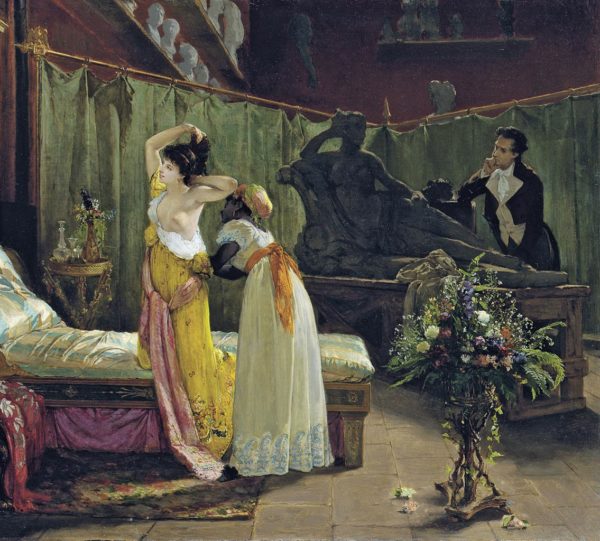
Pauline married one of Napoléon’s favorite generals, Charles Leclerc (1772−1802) as a favor to her brother. They had one child, a son named Dermide (1798−1804). Leclerc was sent to Saint-Domingue to squash a slave rebellion. Pauline and Dermide followed him to the Caribbean. Unfortunately, Leclerc caught yellow fever and died. Pauline and Dermide quickly returned to France and a year later she married the Italian nobleman, Camillo Borghèse (1775−1832). Pauline and her son moved to Rome after the wedding. Learn more about Pauline here.
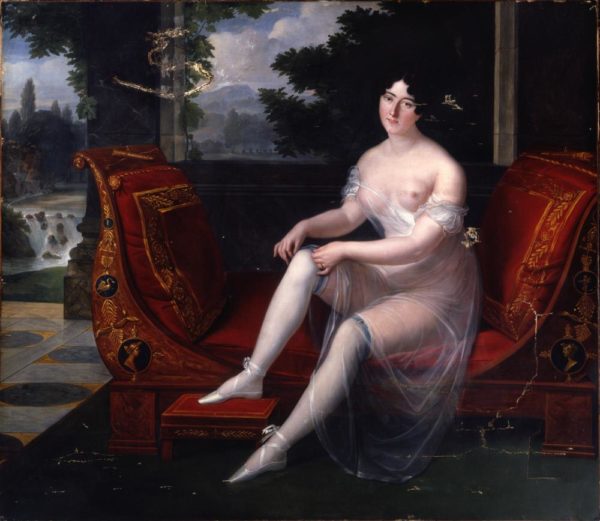
Au Naturale
While in Paris, Pauline purchased the Hôtel de Charost in 1803—now used as part of the British Embassy. Built in the 1720s on Rue du Faubourg Saint-Honoré (no. 39), the mansion was the site of many parties, receptions, and various events during Pauline’s ownership. Contemporary accounts reflect Pauline walking around naked while hosting her receptions and parties—she liked to be admired. She would have African slaves or her “magnificent men” carry her to and from her baths. When her feet got cold, Pauline would have one of her ladies-in-waiting strip off their clothes and lie down on the floor so that Pauline could warm her feet on the unfortunate lady’s body. Her husband commissioned a Florentine artist, Canova, to create a reclining, fully nude sculpture of her. However, Camillo finally couldn’t accept her eccentricities or her many extra-marital affairs and they separated (but never divorced).
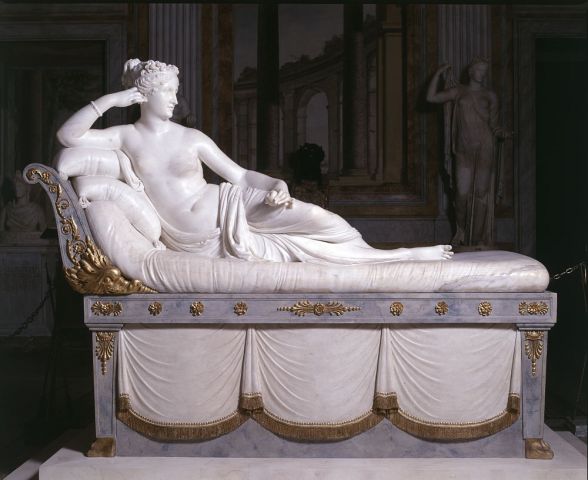
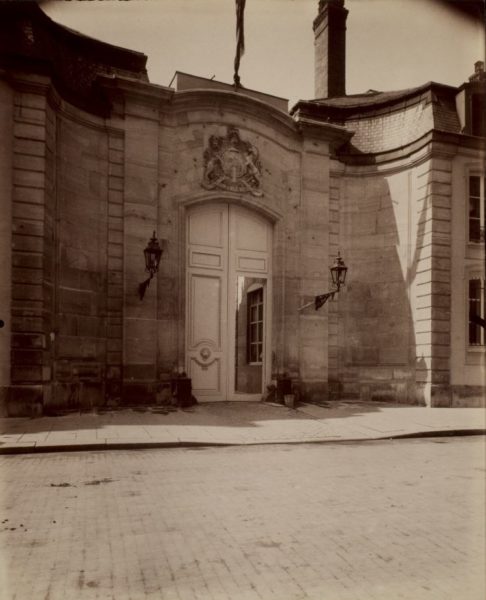
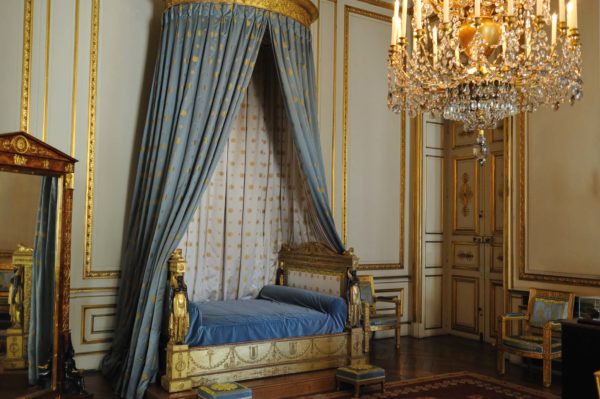
Before she moved to Elba to be with her exiled brother, Pauline sold the Hôtel de Charost in 1814 to the English government. They established the British Embassy at the Hôtel de Charost and it became home to the Duke of Wellington, the new British ambassador to France. The English paid her in installments, which she used to support Napoléon in his first exile. Napoléon was able to escape the following year and return to France in March 1815. Three months later at Waterloo, the Duke of Wellington and a coalition of European forces defeated Napoléon. It’s rather ironic that the Duke and the English helped to partially finance Napoléon (who hated the English) in his second attempt at conquering Europe.
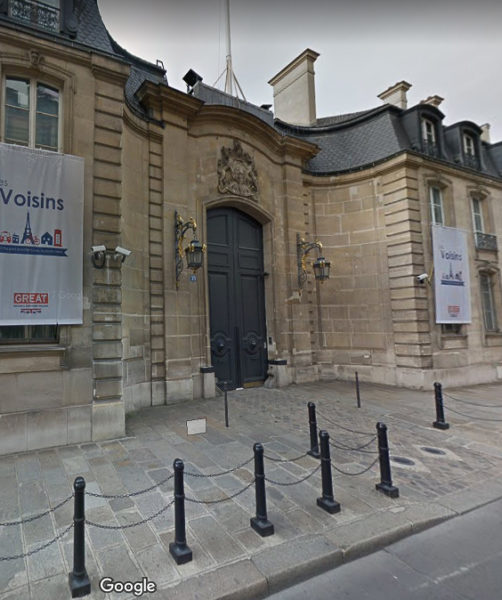
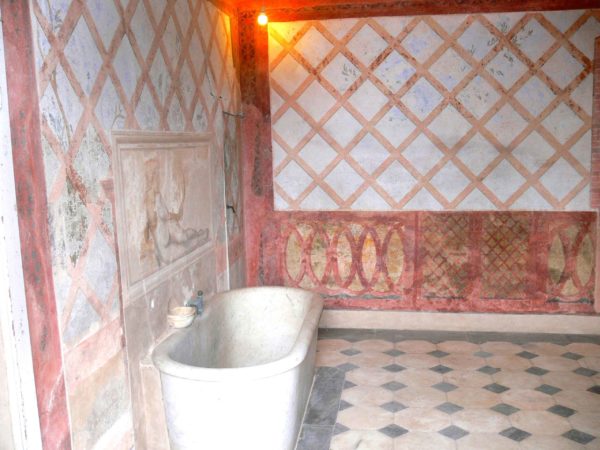
All Good Things Must Come to an End
After Waterloo, Pauline moved back to Rome. Her protector was none other than Pope Pius VII. Other members of the Bonaparte family followed her including her mother. Learn more about Pauline in Italy here.

After Napoléon’s defeat at Waterloo, the Duke of Wellington was in charge of the English occupation of Paris. It was Jacques Necker’s daughter, Madame de Staël (a staunch opponent of Napoléon), who convinced the Duke to withdraw many of the English troops. Madame de Staël and her father are highlighted in my first two walking tour books, Where Did They Put the Guillotine? A Walking Tour of Revolutionary Paris, Volumes One & Two.
Pauline died of cancer in Florence at the age of 44 at her home, Palazzo Borghèse. She is buried in the Saint Mary Major Basilica, Rome.
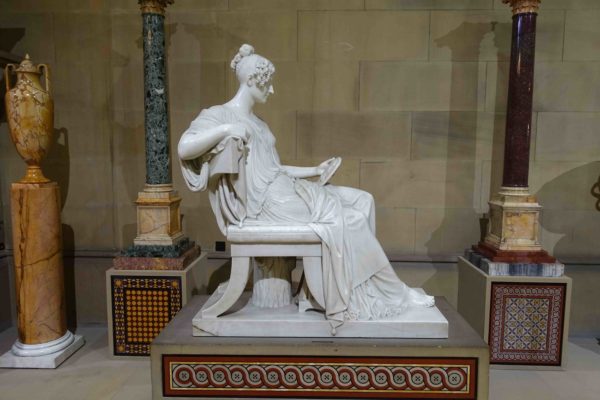
Recommended Reading and Viewing
I’d like to acknowledge Hugh Schofield and his BBC article (20 October 2014) entitled, “Scandalous Tales from the British Embassy in Paris” for providing some material for this blog post. Read the full article here.
What’s New With Sandy and Stew?
If there’s a person you know is buried in one of the Paris cemeteries and you think they have an interesting life story to tell, please let us know. Perhaps we can include them in the book Where Did They Bury Jim Morrison the Lizard King? A Walking Tour of Curious Paris Cemeteries.
They would join Delphine “Sex Toy” Palatsi who is buried in Pére Lachaise—yes, that was her professional name and the exact name on her grave.
Someone Is Commenting On Our Blogs
If there is a topic you’d like to see a blog written about, please don’t hesitate to contact me. I love hearing from you so keep those comments coming.
Why Would You Want To Buy Our “Walks Through History” Books?
Simple.
You like to travel and experience history and historical events. You like to see original buildings that had a significant impact on the people and events of the history you’re engaged with. You want to know the stories behind the brick and mortar in front of you.
The walking tour books are meticulously researched so you can go directly to those sites and learn about the building’s history as well as an introduction to some of the more interesting people associated with it.
Thank You
Sandy and I appreciate you visiting with us. We have some exciting things on the horizon and we’ll keep you updated as we go along.
Share This:
Follow Stew:
Find Stew’s books on Amazon and iBooks.
Please note that we do not and will not take compensation from individuals or companies mentioned or promoted in the blogs.
Walks Through History
Copyright © 2018 Stew Ross


